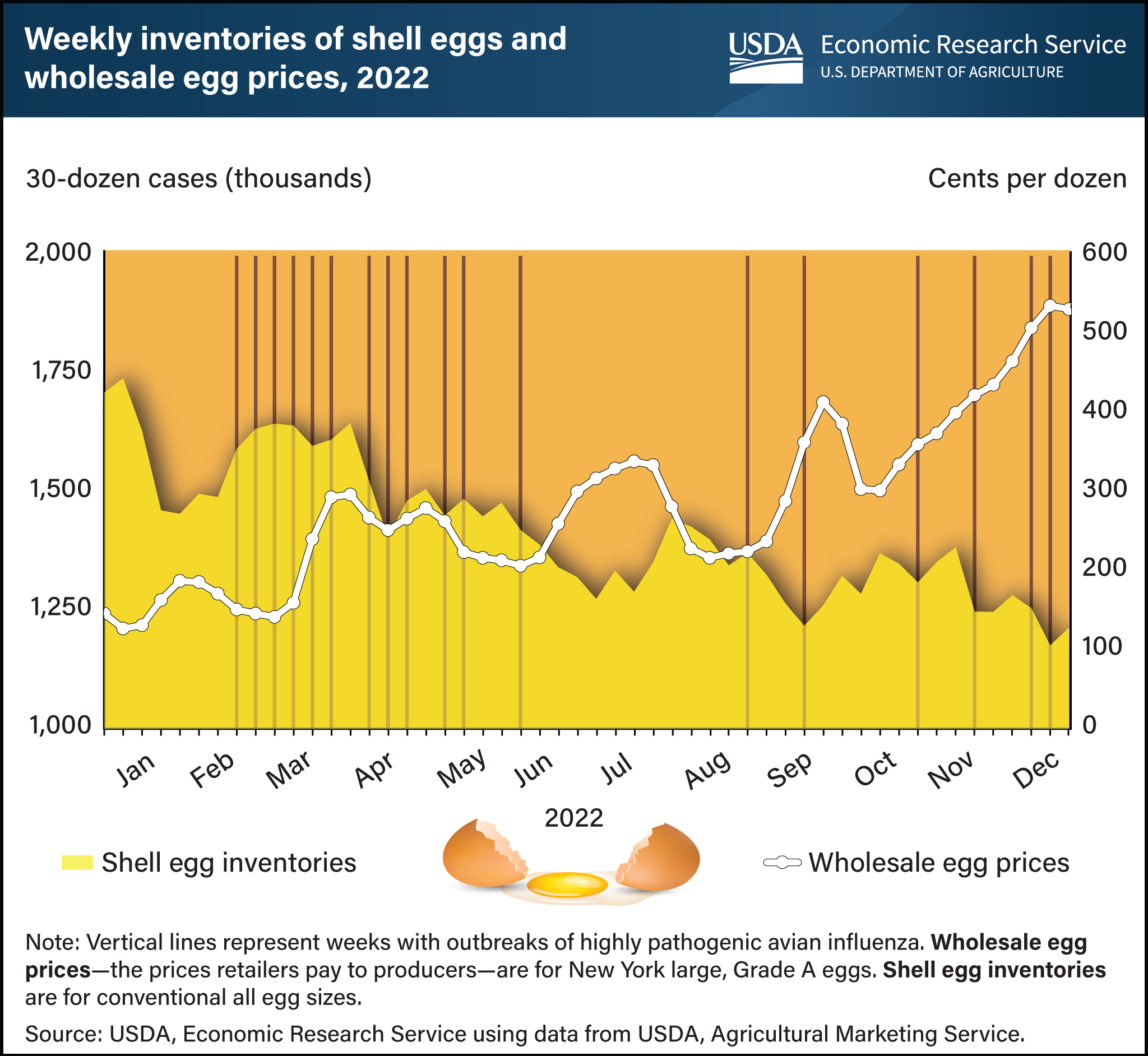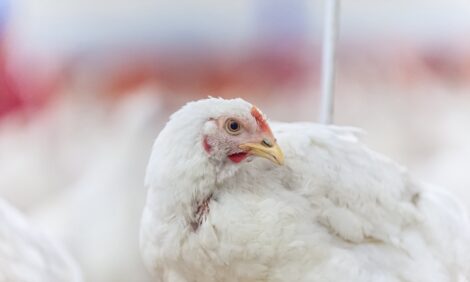



Avian influenza reduces US egg production, drives prices
More than 43 million egg-laying hens lost in 2022As a result of recurrent outbreaks of avian influenza, US egg inventories were 29% lower in the final week of December 2022 than at the beginning of the year, according to a recent USDA report.
By the end of December, more than 43 million egg-laying hens were lost to the disease itself or to depopulation since the outbreak began in February 2022. Losses were spread across two waves: from February to June (30.7 million hens) and from September to December (12.6 million hens).

On constrained supplies, wholesale egg prices - the prices retailers pay to producers - were elevated throughout the year. The HPAI recurrences in the fall further constrained egg inventories that had not recovered from the spring wave. Moreover, the latest outbreak wave came at a point when the industry seasonally adjusts the egg-laying flocks to meet the increasing demand for eggs associated with the winter holiday season.
Lower-than-usual shell egg inventories near the end of the year, combined with increased demand stemming from the holiday baking season, resulted in several successive weeks of record high egg prices. The average shell-egg price was 267% higher during the week leading up to Christmas than at the beginning of the year and 210% higher than the same time a year earlier.
During the last week of 2022, inventory sizes started to rise, and prices fell. Going forward, wholesale prices are expected to decrease as the industry moves past the holiday season and continues rebuilding its egg-laying flocks.










